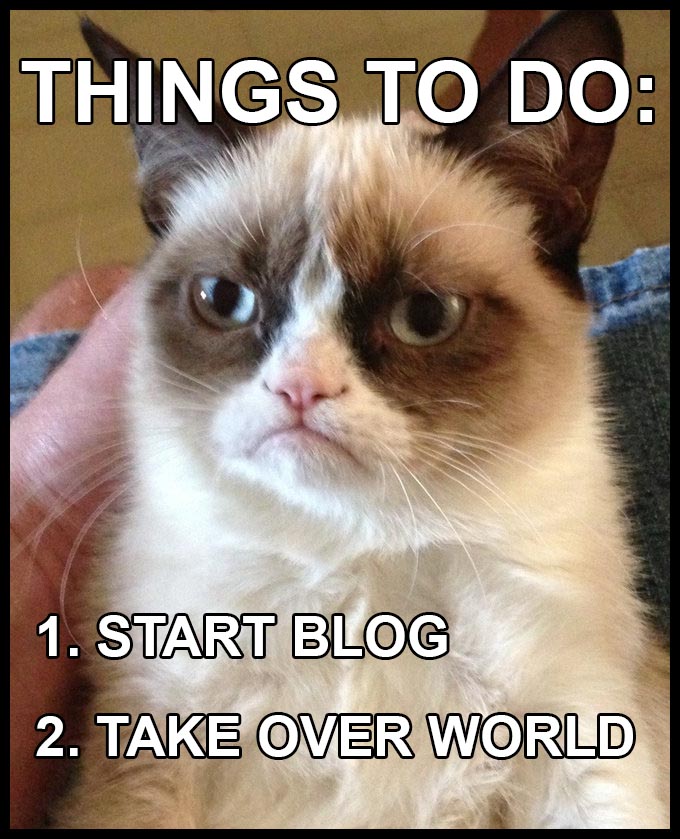To blog or not to blog, there is no question.
I remember starting my blog in 2003 when I was a naive, enthusiastic teenager. It was a time when Xanga was super popular, and my blog let me share my daily thoughts—what I did that day, what I was excited about, and yes, a bit embarrassingly, who my crushes were. This blogging phase didn’t last long since I realized that anything you do online can be found on Google and even by your parents. Ugh, Google, you got me again. Now that I’m a Content Marketer at Marketo, one of my jobs is to manage the blog, where sharing personal stories can actually be beneficial! As a brand, people want to know about your real experiences and the tips you’ve picked up along the way. They’re interested in a behind-the-scenes view of your marketing strategies, the successes you’ve had, the challenges you encountered, and what you learned from them.
In today’s digital world, we have access to a vast amount of information right at our fingertips. We can do our own research and draw our own conclusions, allowing us to make confident decisions. Content is key in this process, and as marketers, you can use it to give your customers the information they need while standing out from the many marketing messages they encounter. A blog is one of the most affordable and genuine ways to connect with them on a large scale.
Blogs help you achieve objectives that span the entire customer lifecycle:
- Building brand awareness and increasing SEO rankings
- Fueling demand generation
- Expanding your reach, improving engagement, and building trust with your buyers
- Highlighting your strengths (solutions, ecosystem, community, expertise, etc.)
While most marketers understand the benefits of a blog, they might not necessarily know how to build an effective and efficient blog program that scales. In this blog, I’ll walk you through how to create your blog strategy from start to finish:
Step 1: Understand Your Audience
If you’re starting to create your blog strategy, you need to first identify who you’re going to develop content for. If you already have a blog, then you need to understand who your current audience is and whether they’re the audience you’re trying to reach. In both situations, it all comes down to developing buyer personas for your blog. You might realize that while your blog content was intended for practitioners, a lot of the content you were publishing speaks to an executive audience.
Personas represent your ideal customer and the different types of people in your audience so that you can focus on creating content that’s right for them. You might already have defined personas in your organization from previous work segmenting and targeting buyers on your other marketing channels, but if you don’t, here are a few key elements that you can use to define them:
- Background: Company, job responsibilities, likes/dislikes about the job, team structure, etc.
- Goals: Goals they have and the challenges they face when they’re trying to meet them
- Source of information: Channels they like to consume content on—email, Facebook, LinkedIn, mobile device, etc.
- Preferred content topics
- Marketing message: Messaging that resonates with them
- Objections: Objections you anticipate from them during the sales process
- Specific product interest
- Role in decision-making process
Your personas will help you identify the list of objectives that will ensure your blog is set-up to support your overarching business goals. These objectives might help you identify who contributes to your blog (employees, partners, customers, etc.), the segments you’re marketing to, the audiences you’re targeting (e.g. B2B or consumer? Practitioners or executives?), and the different topics your blog will cover.
Step 2: Identify Your Contributors
If you’re starting to feel overwhelmed about all the content you’ll have to churn out for your blog, here’s where you can let out a sigh of relief. Just because you’re managing a blog doesn’t mean that you’re expected to write fresh content for it on your own—nor would that even be effective.
Leverage the expertise of everyone in your organization—customer success, support, legal, etc.—to provide your readers with different perspectives. They all bring something to the table with their unique personal and professional experiences. But getting your team to blog can sometimes be easier said than done. Your colleagues may feel like they don’t have the time to blog on top of their day jobs, especially in a fast-pace environment. But the reality is that most of the blog is already developed in their heads—in the presentations they give, the webinars they do, and the conversations they have—they just need to translate it into a written piece. To encourage employees to participate, you can provide them with resources like templates, guides, and other blogs to reference and create an internal blogging program that incentivizes them for their contributions. While rewards are nice, you don’t necessarily have to provide them to get your colleagues to blog. Blogs are a great way for individuals to establish themselves as thought leaders, build their portfolio, grow their network, and gain visibility as they help accomplish your company’s goals.
You can also look beyond your organization and reach outside of your company to find guest bloggers. Start by identifying partners, customers, influencers, and other external guests whose values align with your company’s. This allows you to share their expertise with your readers, leverages their networks to expand your reach, and gives them a voice to a new audience. Keep in mind that if you do this, it’s a good idea to set expectations early on by creating guest blogging guidelines to communicate your approval process and content requirements.
Step 3: Build Out Your Topics
Your blog should ultimately provide value to both your readers and your brand, so publish content on topics that your readers are interested in reading and also support your business goals.
To identify the topics you should cover, look at what your prospects and customers are interested in, the set of topics that are relevant to your company, and then identify what sub-categories are for those topics (e.g. digital advertising could be broken down into sub-categories like PPC, display advertising, social advertising, ad design, budget, strategy, trends, and news). For topics that specifically support your business goals, think about building out topic categories that reinforce your top keywords (to increase your search rankings) and around the solutions your company sells.
You can also ask yourself questions like these to help you brainstorm topic ideas:
- What questions do you get asked at work?
- What questions do you ask your coworkers?
- What problems are your customers trying to solve?
- What challenges do your customers face?
- What questions do your customers ask?
- What keywords does someone look up in search engines that relate to you?
- What market trends are emerging in your space?
And remember, it’s okay to recycle old topics as long they’re still relevant. In fact, one way you can refresh your old content is by looking back at top traffic-generating blogs and writing a new blog on the same topic with new statistics, takeaways, or examples. Because your older blog post will likely have a higher SEO ranking since it’s received more engagement over time, you can also add a link to the new blog at the top of your old blog to take advantage of the high ranking and still provide your readers with valuable, relevant content.
Step 4: Create an Editorial Calendar
Now that you understand who you’re blogging for, who will contribute to it, and what your blog will cover, it’s time to put it all together in a plan! But first things first, set a cadence for how often you publish and make sure you stick to it. Once you get your blog rolling, you set expectations with your audience for how often you publish. If you don’t publish consistently, it can let down your readers and cause them to churn, not to mention that your content will be stale and turn away new visitors.
You can hold yourself accountable to both the cadence you set and the blog strategy you developed by creating an editorial calendar. In your editorial calendar, it’s important to keep track of the following things:
- Date
- Contributor (internal employee + team they’re on or external guest + affiliation)
- Topic
- Blog title
At Marketo, we publish a blog every weekday and on select holidays. (Ryan Gosling, we’ll never let you down!) We have a mix of both internal contributors and external contributors, and understanding what team an employee is on or how a guest is affiliated with us ensures that we’re representing a range of different perspectives. Mapping out the different topics helps us cross-check our content against our strategy to see if there are any topic gaps that need to be filled. Also, we have another column for additional notes, where we add relevant information that informs our topics, such as current events, conferences, or holidays. This comes in handy for timely pieces such as an event recap or trend blog.
Like any marketing channel, running a blog comes down to understanding who your audience is and what your goals are and then executing based on those insights. Armed with this step-by-step guide, I hope you’re ready to go out and get your blog on! What other tips do you have for developing a blog strategy? Share them in the comments below!


